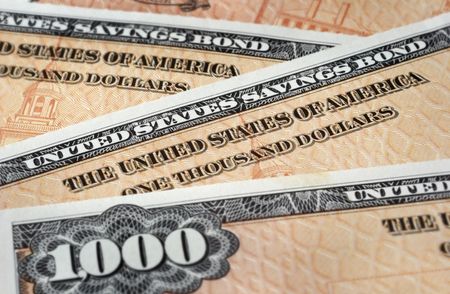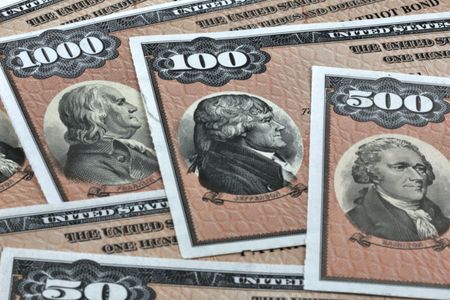5 Health-Care Reform Winners
More patients mean more profits. We found companies that will benefit from higher spending on medical care.

Editor's note: This story has been updated since the passage of health reform legislation.
When it comes to investing, the phrase “health-care reform winners” might sound like an oxymoron. The prospect of greater government involvement has weighed heavily on health stocks ever since health care emerged as a hot issue during the presidential primaries two years ago.
Now that health reform legislation has passed, it’s fair to say that few companies in the health sector, if any, will make out like bandits. Lawmakers have to find a way to pay for the bill, so it includes fees on insurers, drug producers and makers of medical devices.

Sign up for Kiplinger’s Free E-Newsletters
Profit and prosper with the best of expert advice on investing, taxes, retirement, personal finance and more - straight to your e-mail.
Profit and prosper with the best of expert advice - straight to your e-mail.
And Uncle Sam is likely to scrutinize the industry’s profits for years to come. “We’re facing the prospect of parts of the sector becoming more like regulated utilities,” says Mark Oelschlager, manager of Live Oak Health Sciences Fund.
But don’t expect a reorganization of 18% of the U.S. economy to drive any players out of business. “The only way the government can really incorporate reform is through existing channels” and business models, says Charles Fernandez, co-manager of Fairholme Fund.
And the massive influx of new customers that health-care reform is designed to bring about won’t exactly be bad for business. About 32 million uninsured Americans are expected to gain coverage as a result of the legislation.
Benefiting from volume
The companies that have the most to gain are those that can realize higher sales from the surge in the newly insured but that aren’t in the government’s crosshairs for current or future financial penalties. Consider, for example, pharmaceutical distributors -- companies that buy drugs in bulk from manufacturers, store them and ship them to retailers. They stand to gain an enormous amount in sales as formerly uninsured patients gain coverage and can afford to buy drugs.
But profits are so thin in the distribution business that it’s unlikely either of the two leaders, McKesson Corp. (symbol MCK) and Cardinal Health (CAH), will become the target of government cost-saving measures. McKesson’s operating profit margin on drug distribution is 1.6%; Cardinal’s is just 0.9%. Those slim margins are likely to expand because distributors earn fatter profits on generic drugs than they do on brand-name prescriptions, and many popular brand-name products are due to lose patent protection over the next several years.
McKesson is “the Cadillac of the industry,” says Steven Rogé, a portfolio manager at R.W. Rogé & Co. With a market share of 31% (compared with 29% for Cardinal), McKesson is the biggest distributor. In an indication of McKesson’s standing, the Centers for Disease Control and Prevention tapped the company to be the exclusive distributor of the H1N1 flu vaccine.
But investors may find McKesson’s health-care technology business even more appealing. The San Francisco-based company sells software, including programs for storing medical records that are used to manage hospitals and private physician practices. Although 20% of private practices and some 70% of hospitals that have more than 200 beds already use McKesson’s software, this segment accounts for only 3% of the company’s annual revenues of about $108 billion. But because its software business boasts double-digit profit margins and higher growth rates than drug distribution, it’s a safe bet that this product line will figure prominently in the company’s future. In that regard, McKesson has the Obama administration on its side. The economic-stimulus program that President Obama signed into law in February 2009 included $20 billion for the adoption of electronic medical records.
Cardinal is a bit of a turnaround story. The company’s profit margins are even thinner than McKesson’s. In part, that’s because CVS Caremark and Walgreens account for nearly half its sales, and the drugstore chains are so large that they can squeeze Cardinal on prices. But in 2008, the Dublin, Ohio, company gained an experienced new chief executive, George Barrett, who is committed to improving the firm’s profitability and focusing on its core distribution business.
Many of the forces favorable to distribution companies should boost drug-benefits managers. Express Scripts (ESRX) processes and pays drug claims on behalf of clients such as insurers and union- and government-sponsored health plans. Like the distributors, it stands to gain from the increase in drug purchases as the ranks of the insured expand. Because Express Scripts represents the collective buying power of all its clients’ patients, who purchased more than 400 million prescriptions in 2008, the company can negotiate discounts with drug companies and pharmacies. And because the St. Louis-based company manages clients’ lists of covered drugs, it can switch patients from brand-name drugs to generics -- which, as is the case for distributors, carry wider profit margins. Express Scripts recently purchased WellPoint’s pharmacy-benefits unit, which should boost the firm’s annual claims volume by 50% once the deal closes.
The new law includes a provision for bringing generic versions of biotech drugs to market, another development that will help the pharmacy-benefits managers. Regulating generic versions of patented drugs has always been relatively simple because the generics are identical, on a molecular level, to brand-name drugs. The world of biotech drugs is much fuzzier, which is why biotech generics, or so-called biosimilars, have no way of reaching the market. Once such a pathway is established, drug-benefits managers will gain additional claims, as more customers are able to pay for biosimilars.
If Congress and the Obama administration want more bang from the health-care buck, they will surely look toward the diagnostics sector to play a key role. The tests that industry leaders Quest Diagnostics (DGX) and Laboratory Corp. of America (LH) perform every day -- from measuring cholesterol levels to conducting highly sophisticated genetic tests -- are integral not only to preventive care and early medical diagnosis but also to long-term cost savings. “Diagnostic testing accounts for less than 3% of total spending on health care but drives roughly 70% of clinical decisions,” says Channing Smith, co-manager of Capital Advisors Growth Fund. However, Quest and LabCorp, which account for 66% of the independent-lab sector’s revenues, could be pinched by reform if Uncle Sam lowers reimbursement rates for tests on Medicare patients.
Both firms are looking to expand their sales of highly sophisticated tests, such as genetic and cancer-related analyses, which are more profitable than routine tests. Quest, based in Madison, N.J., derives 20% of its annual revenues of $7.5 billion from such tests; LabCorp, headquartered in Burlington, N.C., generates 36% of its $4.7 billion in yearly revenues from complex tests. Analysts expect earnings at Quest and LabCorp to grow by 13% annually over the next three to five years.
Fund options
The stock market hates uncertainty, so it was no surprise that health-care stocks rallied the day after legislation passed. It’s probably too late for you to capture any further short-term bounce, but a diversified health-care fund will let you reap the long-term boost as more patients gain coverage and as America’s population ages. “Starting in 2011, and for the next 20 years, 10,000 additional people will become eligible for Medicare each day, on average,” says Capital Advisors’ Smith. T. Rowe Price Health Sciences (PRHSX) is a fine choice.
Manager Kris Jenner invests in companies of all sizes. He has a penchant for innovators that offer new or unique products. The fund has a heavy stake in biotech stocks -- 30% of assets at last report. Because these stocks typically don’t pay a dividend, Jenner sells options on the stocks to generate a supplemental income stream. Over the past ten years through March 22, the fund returned an annualized 7.6%, beating the typical health-care sector fund by an average of 3.63 percentage points per year. Year-to-date through March 22, the fund has gained 10.01%.
Among exchange-traded funds, Health Care Select Sector SPDR (XLV) offers the lowest expenses, at 0.21% annually. The ETF tracks the health-care stocks in Standard & Poor’s 500-stock index, meaning that it’s biased toward large companies and toward big drug companies in particular. It has gained 4.47% year-to-date and an annualized 1.72% over the past ten years.
How will Obama’s heath care bill affect YOUR small business? Find out by clicking here.
Get Kiplinger Today newsletter — free
Profit and prosper with the best of Kiplinger's advice on investing, taxes, retirement, personal finance and much more. Delivered daily. Enter your email in the box and click Sign Me Up.

-
 RMD Deadline April 1: Five Tax Strategies to Manage Your 2025 Income
RMD Deadline April 1: Five Tax Strategies to Manage Your 2025 IncomeTaxable Income The April 1, 2025, deadline for required minimum distributions (RMDs) is fast approaching for retirees who turned 73 in 2024.
By Kelley R. Taylor Published
-
 Rising AI Demand Stokes Undersea Investments
Rising AI Demand Stokes Undersea InvestmentsThe Kiplinger Letter As demand soars for AI, there’s a need to transport huge amounts of data across oceans. Tech giants have big plans for new submarine cables, including the longest ever.
By John Miley Published
-
 Best Banks for High-Net-Worth Clients 2024
Best Banks for High-Net-Worth Clients 2024wealth management These banks welcome customers who keep high balances in deposit and investment accounts, showering them with fee breaks and access to financial-planning services.
By Lisa Gerstner Last updated
-
 Stock Market Holidays in 2025: NYSE, NASDAQ and Wall Street Holidays
Stock Market Holidays in 2025: NYSE, NASDAQ and Wall Street HolidaysMarkets When are the stock market holidays? Here, we look at which days the NYSE, Nasdaq and bond markets are off in 2025.
By Kyle Woodley Last updated
-
 Stock Market Trading Hours: What Time Is the Stock Market Open Today?
Stock Market Trading Hours: What Time Is the Stock Market Open Today?Markets When does the market open? While the stock market does have regular hours, trading doesn't necessarily stop when the major exchanges close.
By Michael DeSenne Last updated
-
 Bogleheads Stay the Course
Bogleheads Stay the CourseBears and market volatility don’t scare these die-hard Vanguard investors.
By Kim Clark Published
-
 The Current I-Bond Rate Until May Is Mildly Attractive. Here's Why.
The Current I-Bond Rate Until May Is Mildly Attractive. Here's Why.Investing for Income The current I-bond rate is active until November 2024 and presents an attractive value, if not as attractive as in the recent past.
By David Muhlbaum Last updated
-
 What Are I-Bonds? Inflation Made Them Popular. What Now?
What Are I-Bonds? Inflation Made Them Popular. What Now?savings bonds Inflation has made Series I savings bonds, known as I-bonds, enormously popular with risk-averse investors. So how do they work?
By Lisa Gerstner Last updated
-
 This New Sustainable ETF’s Pitch? Give Back Profits.
This New Sustainable ETF’s Pitch? Give Back Profits.investing Newday’s ETF partners with UNICEF and other groups.
By Ellen Kennedy Published
-
 As the Market Falls, New Retirees Need a Plan
As the Market Falls, New Retirees Need a Planretirement If you’re in the early stages of your retirement, you’re likely in a rough spot watching your portfolio shrink. We have some strategies to make the best of things.
By David Rodeck Published